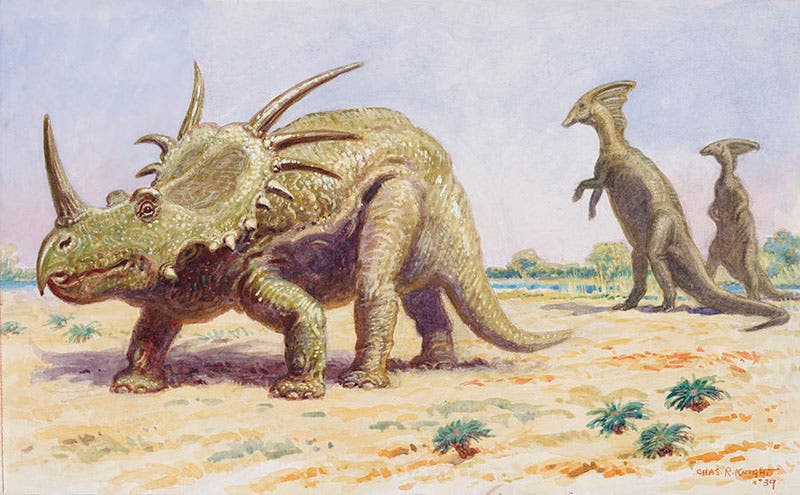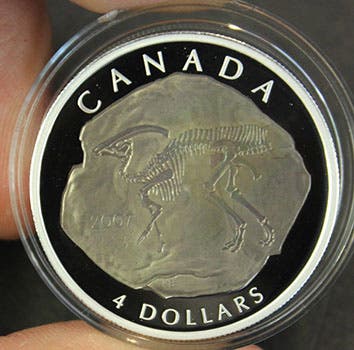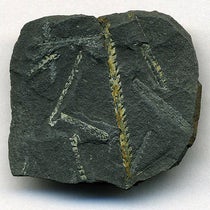Scientist of the Day - William Parks
William Parks, a Canadian paleontologist, was born Dec. 11, 1868. In 1920, Parks was part of a University of Toronto expedition that discovered a new hadrosaur dinosaur in Alberta; in 1922, he described it in print and named it Parasaurolophus. This was a very odd dinosaur, with a long curved bony crest on its head, very much like the Diva in the film The Fifth Element (1997). Paleontologists have been debating the purpose of this crest since Parasaurolophus was first unearthed. It was initially thought that it might be some kind of a swimming aid, since in the 1920s, many believed that the duck-billed dinosaurs (hadrosaurs) were aquatic. The crest is filled with hollow tubes, and so it was surmised that these could fill with air and provide extra oxygen, or even buoyancy, for a diving dino. When it was realized that duckbills are terrestrial, paleontologists began to see the tubes as resonance chambers, allowing Parasaurolophus to communicate by bellowing, perhaps over long distances.
Then in 1978, a third explanation was offered. It was suggested that the crest was a thermo-regulator, and functioned to keep the Parasaurolophus brain cool. We try never to have opinions on matters where some expertise should be required, but really! This would be somewhat akin to putting a 50,000 BTU air conditioner in a phone booth.

Charles Knight, Styracosaurus and Parasaurolophus, 1939
The original skeleton found by Parks is on display in the Royal Ontario Museum in Toronto (first image).There is another Parasaurolophus skeleton, this one restored, in the Field Museum in Chicago (second image); in the photo, you can see a mural by the famous paleoartist Charles Knight at the upper right. Knight did another mural painting for the Museum that shows a Styracosaurus with two Parasaurolophi just behind (third image).

Canadian $4 coin with Parasaurolophus on the reverse
In 2007, Canada issued a $4 coin with Parks’ original Parasaurolophus slab on the reverse (fourth image). It goes for bewildering prices on eBay. We are waiting for the dinosaur dime series, which might be affordable.
Dr. William B. Ashworth, Jr., Consultant for the History of Science, Linda Hall Library and Associate Professor, Department of History, University of Missouri-Kansas City. Comments or corrections are welcome; please direct to ashworthw@umkc.edu.







